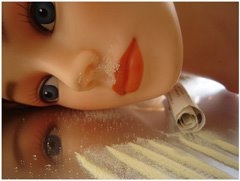Portable Cocaine Sensor Developed

The press office from the University of California, Santa Barbara explains that this "real-time sensor for detecting cocaine" is made from inexpensive and "off-the-shelf" electronics. The entire sensor can be fitted into a small hand-held device:
Co-author and Nobel laureate Alan Heeger said, "We have developed a method of detecting small molecules and proteins in a way that is not specific to cocaine -- a whole class of biosensors can be based on this concept. It can be applied to the prevention of bioterrorism. It is beautiful work; the sensor is fully portable." Heeger is a professor of physics and of materials and is affiliated with the Center for Polymers and Organic Solids at UCSB. He won the Nobel prize in chemistry in 2000...To create the sensor, the researchers took a DNA molecule that converts from a floppy and unfolded shape into a structured, folded shape in the presence of cocaine. They then observe the change in the DNA by monitoring how electrons travel through it. There are DNA molecules available that bind to many different targets, so it follows that similar sensors can be easily made for other targets.
Currently the cocaine sensor that is widely used by police is the Scott test. When a chemical is added to the white powder it changes color. But there are many ways around this test, explained Plaxco, and some cocaine manufacturers add a chemical to block the color change. "Our sensor can detect cocaine no matter what they have cut it with: powdered sugar, flour, or the coffee that is sometimes used to mask the smell from dogs." [Kevin Plaxco is an associate professor of chemistry and biochemistry -ed.]
At this point the new sensor detects cocaine in the blood or saliva to a degree of a few micromolars. This is equivalent to the concentration of cocaine that would result from dropping a kilogram of cocaine into an olympic-sized swimming pool. That concentration would be the equivalent of detecting three parts per million in blood. Still, this is not yet sensitive enough for use in the emergency room, since a person with .3 parts per million of cocaine in their blood would be considered "stoned on cocaine." So more work needs to be done to increase the sensitivity of the new test.

1 Comments:
I am loving that picture!
Post a Comment
<< Home